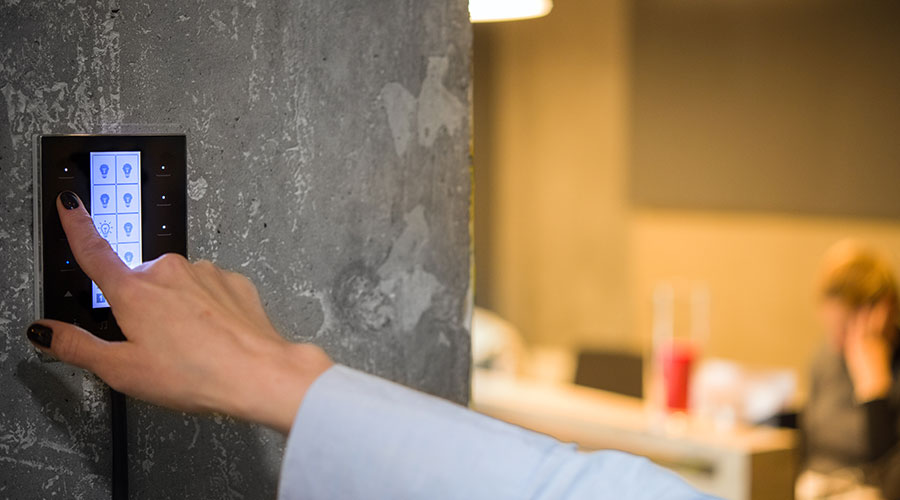Digitally Controlled Lighting Systems Can Provide Improved Efficiency
Digitally controlled lighting systems combine fully dimmable, digitally addressable light fixtures with such controls as occupancy sensors, wall controls, and daylight sensors to deliver the right amount and quality of light at the right time to a given space. The use of dimming controls can extend energy efficiency beyond simple "on/off" controls and instead provide control throughout the hours of operation. Sensors can respond to motion as well as sounds, to provide redundancy and reduce false readings that turn lights off while a space is occupied.
Digital controls also allow lighting to be reconfigured to appropriate light levels or work with different controls as tenants change or occupants move within the space. This can be achieved without rewiring or removing any fixtures or controls but rather by simply re-assigning lights to different controls through a software program.
A recent development is gestural controls, which allow occupants to adjust light levels with simple hand motions without ever touching a control switch. "This makes the lighting system more adaptable to the needs of the occupants, without requiring human intervention or sophisticated calibrations," says Cheryl English, vice president of government and industry relations for Acuity Brands.
Newer lighting controls systems can also provide facility professionals with the ability to use the same controls used for lights to also control HVAC or plug loads. The same occupancy sensors turning lights on and off in spaces also can be used to adjust temperature settings or turn off receptacles to manage plug loads to provide additional energy savings.
Related Topics:














